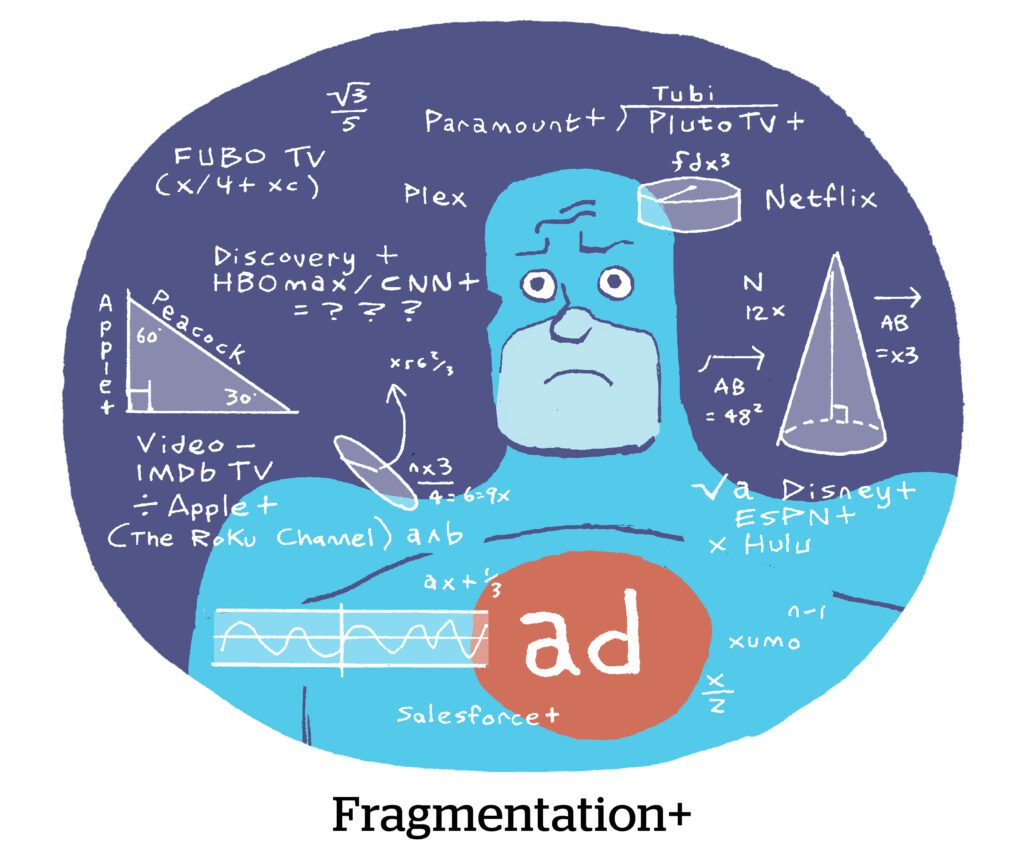Event planners love to sprinkle some audience participation into their big conferences, and this week’s CIMM Summit in New York City was no exception.
Tuesday’s schedule concluded with a panel called “Fact Vs. Fiction: The Futurist POV on Media in 2030,” where the audience weighed in on predictions about what the ad tech industry will look like in five years.
Three of the predictions that virtually everyone in the crowd agreed would be “fact” by the year 2030 stood out to me:
1. Future fact: More than 75% of TV and/or video ad impressions will be traded programmatically.
One could argue we’re already there where CTV is concerned. According to the IAB’s annual Digital Video Ad Spend and Strategy report, CTV was already 75% programmatically transacted as of last year, and is now up to 85%.
Meanwhile, over on the sell side, Jamie Power, SVP of addressable sales at Disney, shared during an earlier fireside chat that she expects 75% of Disney’s inventory to be transacted programmatically by 2027.
It’s not surprising, then, that most people in attendance assume programmatic buying will take over the industry within such a relatively short time frame. Although, as Howard Shimmel, president of Janus Strategy & Insights noted, there’ll likely always be some demand for direct sales against sports, live news and other big tentpole events.
But “for low-rated stuff,” Shimmel said, “you don’t need a salesperson.”
2. Future fact: The average US household will be exposed to 5,000 ad-supported video impressions per month, up from 3,000 this year.
Cynical? Maybe. But even if this prediction comes true, it doesn’t necessarily mean we’ll be seeing an increase in ad load. As OMD Chief Media Officer Ben Hovaness said on the panel, YouTube’s skippable six-second bumpers offer convincing proof that a larger number of shorter-length impressions can be just as profitable (if not more so) than fewer but longer ads.
“If we’re moving to a world where 80% of viewing is going to be streaming TV,” he said, referring to another agreed-upon prediction from earlier in the panel, then “interactive formats that include the option to skip are going to become a lot more commonplace.”
3. Future fact: Synthetic audiences – meaning AI-generated personas based on real-world data – will be a standard planning input for more than half of all TV and video ad campaigns with budgets over $25 million.
This one was especially interesting to me because, while the crowd was almost unanimous that this will happen, a majority of the panel disagreed.
Obviously, a lot of companies are already using machine learning algorithms to analyze data and make decisions. Meanwhile, plenty of measurement providers use data that’s not based directly on real people but is instead modeled to some extent, said Shimmel.
But before you can rely on models, you have to make sure you have sound inputs in the first place.
“When I look at the audiences that are fastest-growing in the US, they are the audiences that are typically minoritized or underserved or underrepresented,” said Janelle James, head of US cultural intelligence at Ipsos. “The data that exists about them today is not as accurate as it could be, and so I would be worried about compounding bias.”
Bonus!
The audience was very divided on the notion that by 2030 more than 80% of TV campaigns will offer outcome-based guarantees – which, to be fair, is a lot.
“Outcomes” has been a pretty big buzzword in CTV for the last few years, and for good reason. The more performance-based streaming becomes, the more marketers look toward quantifiable metrics to guide how they spend their ad dollars.
Panel moderator Tameka Kee, who serves as the SVP of programming and operations for CIMM, suggested the hesitancy to suggest everything will be outcomes-based might have something to do with media organizations not wanting to be held accountable for outcomes.
But, according to Hovaness, it’s actually the word “guarantees” that’s the problem.
“Unless you have very high confidence that you can move the needle on a business outcome, this would be a pretty crazy risk for a media seller to take,” he said. Instead, other intermediaries, like agencies, are more likely to consider taking on those outcome-based risks.
Guess we’ll all have to check back in five years from now to see who got it right.
Did you attend this year’s CIMM Summit? What are your hot takes about the future of media buying and selling? Let me know by dropping me a line at victoria@adexchanger.com.
📢 Speaking of interactive panel programming, don’t forget that AdExchanger’s Programmatic IO New York is only two weeks away on Mon., September 29 and Tues., September 30! We’ll host a trivia challenge on Tuesday that you’ll definitely have fun with. And if you’re also planning to hit up ScreenShift (Tues., October 14), and Convergent TV (March 2026) in addition to Prog IO, we’ve got an all-access pass deal for all three events going until Fri., September 26. Check out more details here.












